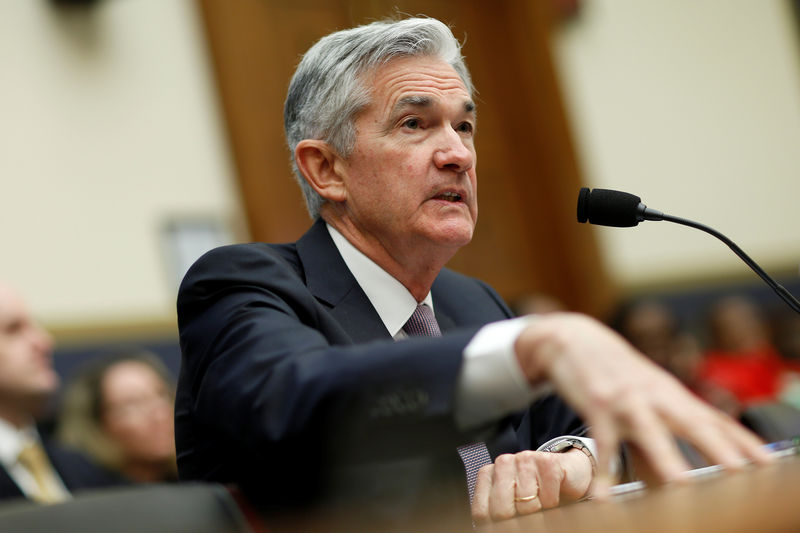Street Calls of the Week
By Yasin Ebrahim
Investing.com -- The Federal Reserve’s fingerprints are all over the dramatic collapse of Silicon Valley Bank, and some are calling on the central bank to put further rate hikes on ice as debate heats up on whether a potential banking crisis looms.
“Absolutely the Fed should pause [rate hikes],” Will Rhind, CEO and Founder of GraniteShares told Investing.com’s Yasin Ebrahim in an interview Friday.
Following the news that SVB Financial Group (NASDAQ:SIVB) had gone bust, investors reined in their bets on a 50-basis-point rate hike in March to 40% from about 80% seen earlier this week, according to Investing.com’s Fed Rate Monitor Tool.
“There was always going to be a consequence to raising rates this fast and this high, and people didn't necessarily know what the consequence would be. “The Silicon Valley Bank is the first thing that has broken, and it's a direct consequence of rising rates,” Rhind added.
SVB – A victim of the Fed’s aggressive rate hikes?
The final days of SVB will go down in history as one of the fastest bank runs on record. In just 24 hours, the Silicon Valley Bank saw rapid deposit outflows of $42 billion on Thursday and quickly found itself in a game of catch-up that it ultimately lost after failing to sell assets fast enough to meet withdrawals.
But the bank’s problems had a much longer shelf life than just a few days. It was many months in the making, dating back to early days of the coronavirus pandemic, when tech was in-vogue and firms raised huge sums of cash from venture capitalists.
With its deep roots in the tech industry, SVB seemed the obvious partner of choice for many of these cash-rich upstarts and tech firms, who ploughed billions into the bank’s coffers, boosting its deposits.
At time when ample liquidity was sloshing around in the economy, driven by ultra-low interest rates and fiscal stimulus meant SVB struggled to lend it all out. The California-based lender instead decided to invest the deposits mostly in U.S. long-term Treasury bonds that allowed it to earn a return, albeit just a few percentage points.
This worked well when interest rates were low as the price of the Treasuries, which trade inversely to rates, on its balance sheet remained relative stable, but that all changed. The Fed realised that inflation wasn’t transitory and embarked on its fastest pace of rate hikes in more than four-decades.
SVB was now left with a real problem: The price of its bonds, which trade inversely to rates, were falling sharply and it wasn’t too long until it was sitting on a ton of low-yielding assets that were underwater.
The bank had huge unrealized losses on securities that needed shifting – and quickly. The lender’s tech-heavy customers were already drawing on their deposits as rising costs and rates started to bite.
The lenders solution was to sell its low-yielding long-term bonds and buy short-term bonds that were now boasting much more attractive yields amid a determined Fed keen to push rates to restrictive levels as fast as possible.
The bank unveiled this remedy to shareholders in letter, estimating a $1.8 billion loss on the sale of its bond portfolio, and also detailed plans to raise about $2.25 billion in capital to shore up its finances.
But the bulk of investors and clients weren’t willing to wait around. Ignoring the call to “stay calm,” from SVB CEO Greg Becker, clients stepped up the pace of withdrawals, leaving the lender staring down the abyss of insolvency.
Political Pressure Beckons for Powell?
The debate now for investors is whether this is a ‘one-bank issue,’ or something systemic. There is some evidence to suggest there may be more SVBs out there.
Customers Bancorp (NYSE:CUBI), First Republic Bank (NYSE:FRC) and New York Community Bancorp (NYSE:NYCB) were among a list of 10 banks, outlined by Morningstar, that are holding unrealized losses and face large hole in their finances if they are forced, as SVB was, to sell.
The threat that something systemic could be brewing in the banking system, forcing many regional banks out of business isn’t going to be well received in Washington. And the likely respond may come in the form of intense political pressure on Federal Reserve Chairman Jerome Powell to cease rate hikes.
“If the response to raising interest rates is putting regional banks out of business, then politically that becomes very tough because a lot of politicians will be putting pressure on the Fed, saying that it is unacceptable, you have to stop,” Rhind said.
While market participants have reversed course on a 50-basis-point rate hike, they don’t believe the Fed will throw in the towel on hikes just yet and forecast another 25bps rate hike in March even if the inflation report next week comes in hot.
“Even if inflation surprises on the upside next week, we believe that the Fed will ultimately conclude that risks have become more two-sided, and moving in 25bp increments is the most prudent path,” Jefferies said.
Still as the debate heats up on whether we’re staring down the barrel of another potential banking crises, there is some shared consensus that the Fed’s heavy hand has played a role in the bust of SVB, resulting in the largest bank failure since the 2008 global financial crisis.
“While this episode is not emblematic of a banking crisis, it is emblematic of the financial cracks and unintended consequences to the fastest rate hikes since the 80s,” Wei Li , Global Chief Investment Strategist at BlackRock (NYSE:BLK), said in a post on Friday.
